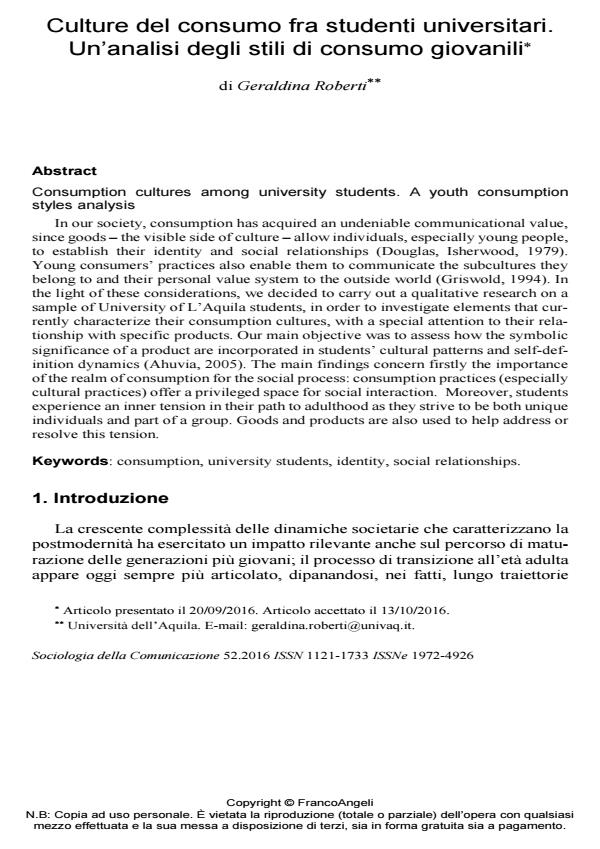Consumption cultures among university students. A youth consumption styles analysis
Journal title SOCIOLOGIA DELLA COMUNICAZIONE
Author/s Geraldina Roberti
Publishing Year 2017 Issue 2016/52
Language Italian Pages 14 P. 70-83 File size 187 KB
DOI 10.3280/SC2016-052006
DOI is like a bar code for intellectual property: to have more infomation
click here
Below, you can see the article first page
If you want to buy this article in PDF format, you can do it, following the instructions to buy download credits

FrancoAngeli is member of Publishers International Linking Association, Inc (PILA), a not-for-profit association which run the CrossRef service enabling links to and from online scholarly content.
In our society, consumption has acquired an undeniable communicational value, since goods - the visible side of culture - allow individuals, especially young people, to establish their identity and social relationships (Douglas, Isherwood, 1979). Young consumers’ practices also enable them to communicate the subcultures they belong to and their personal value system to the outside world (Griswold, 1994). In the light of these considerations, we decided to carry out a qualitative research on a sample of University of L’Aquila students, in order to investigate elements that currently characterize their consumption cultures, with a special attention to their relationship with specific products. Our main objective was to assess how the symbolic significance of a product are incorporated in students’ cultural patterns and self-definition dynamics (Ahuvia, 2005). The main findings concern firstly the importance of the realm of consumption for the social process: consumption practices (especially cultural practices) offer a privileged space for social interaction. Moreover, students experience an inner tension in their path to adulthood as they strive to be both unique individuals and part of a group. Goods and products are also used to help address or resolve this tension.
Keywords: Consumption, university students, identity, social relationships.
Geraldina Roberti, Culture del consumo fra studenti universitari. Un’analisi degli stili di consumo giovanili in "SOCIOLOGIA DELLA COMUNICAZIONE " 52/2016, pp 70-83, DOI: 10.3280/SC2016-052006